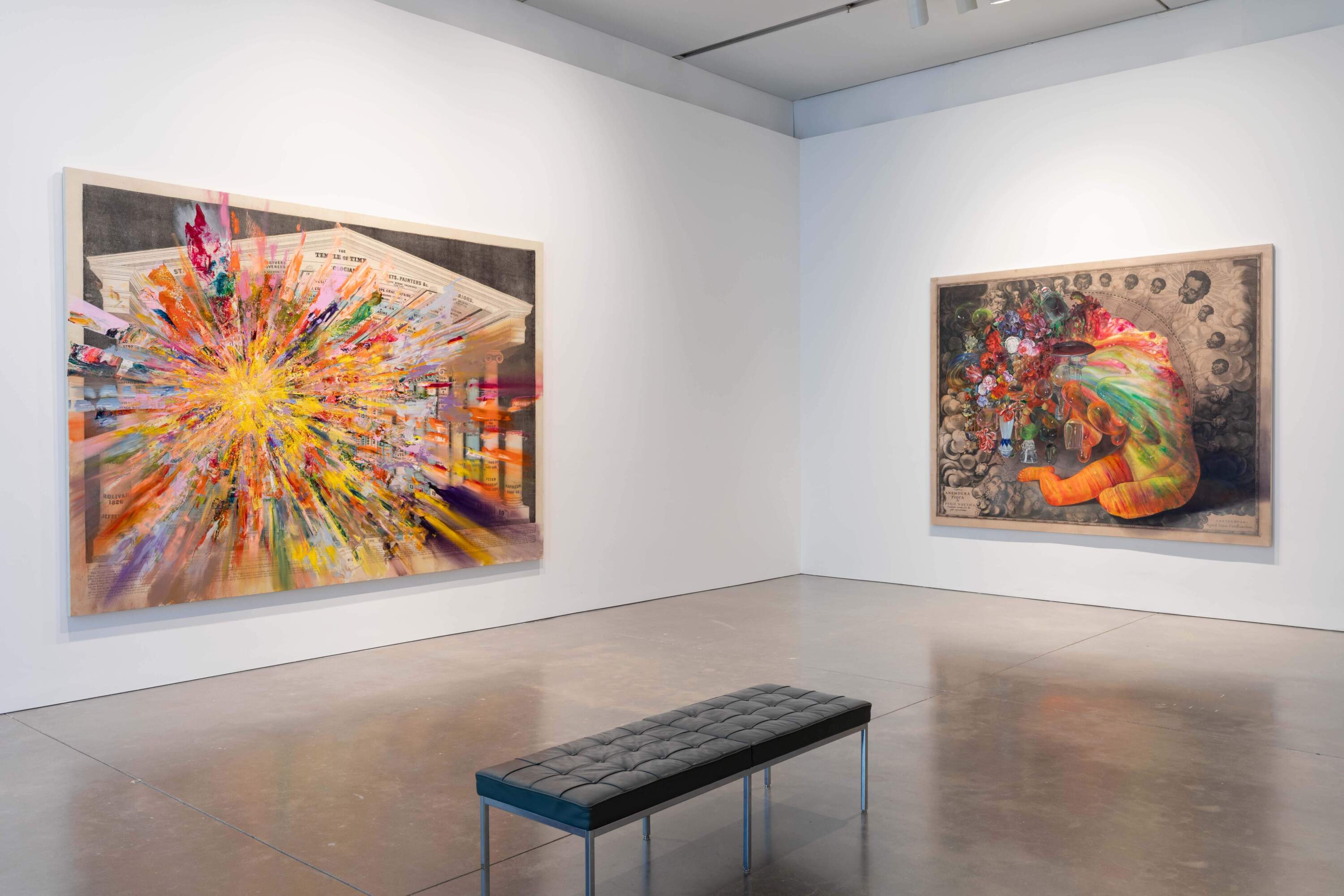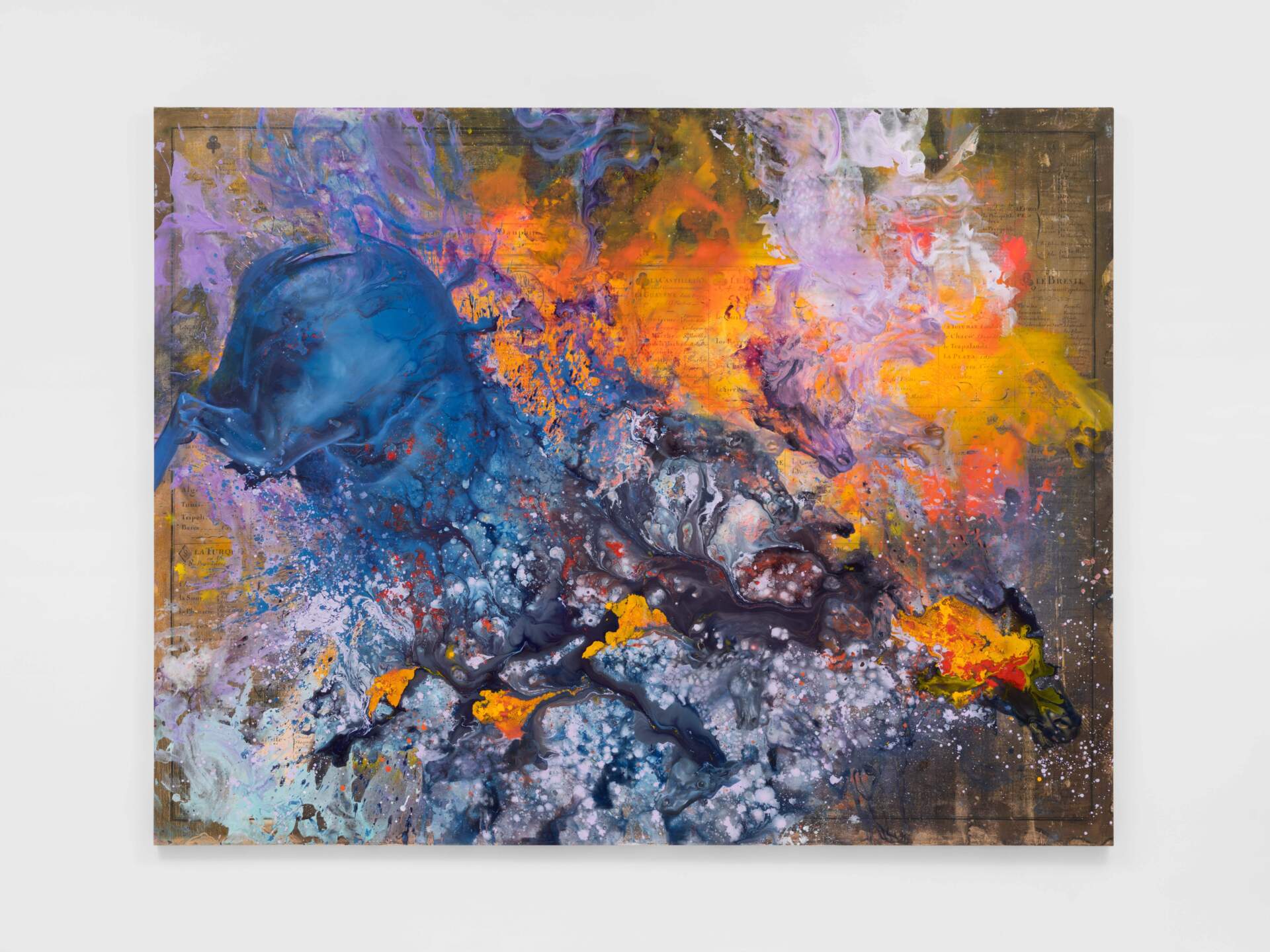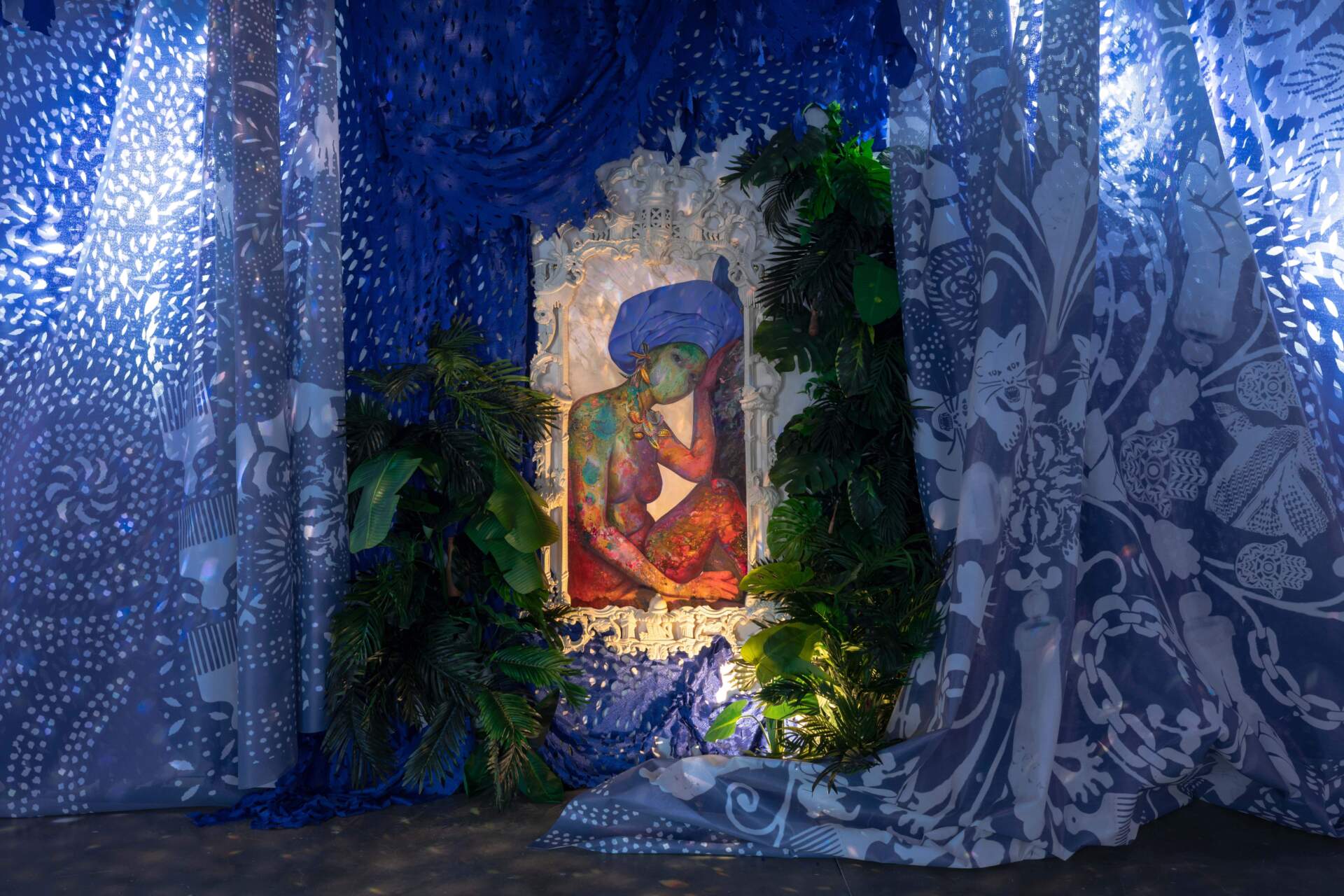Advertisement
Artist Firelei Báez returns to the ICA with sweeping mid-career survey

Editor's Note: This is an excerpt from WBUR's weekly arts and culture newsletter, The ARTery. If you like what you read and want it in your inbox, sign up here.
My favorite painting in the new Firelei Báez exhibition at the Institute of Contemporary Art in Boston is the one with the horses — mainly because it doesn’t appear to involve horses at all. An abstract whirl of color splashes across the bottom of the canvas like crashing waves and bursts toward the top of the painting like fire. But study the image for more than a moment and shapes begin to appear: the large haunches of a charging horse bloom on the left, while on the right, its elegant snout emerges like a shadow from behind a splash of gold.
Pretty soon, all you can see are the outlines of horses, winking in and out of the canvas like a mirage, all surging toward some unseen point beyond the painting’s edge. Maybe it’s a stampede of horses, kicking up dust or galloping across a creek. Study it even more closely, and you’ll notice that the entire painting is rendered on top of another image, a reproduction of a set of historical playing cards dedicated to the 17th-century Grand Dauphin of France.
It’s a remarkable painting, not just for its formal achievement — Báez’s ability to conjure a stampede of horses without actually painting a single complete horse — but for the way that it reveals itself, slowly, continuously, even after the viewer has walked away. Báez has said that she was inspired by the many heraldic paintings and sculptures she encountered during a residency in Rome. Those horses were depicted as tools of conquest, whereas the animals in her painting are wild — and quite literally disrupting the tidy historical narrative from which they’ve been wrested.

During a walkthrough of the exhibit on Tuesday, Báez revealed another Easter egg: the bodies of Italian dragonflies that flew into her studio and got stuck to the canvas while she was working on the painting. Her paintings, she explained, “are actually physical markers of where I’ve been, and of the environment, and in that way, more like portrait than anything else.”
The piece, titled “Untitled (Les tables de geographie reduites en un jeu de cartes),” is part of a sweeping mid-career survey of Báez’s work that opened at the ICA on April 4. Báez, who is now based in New York, grew up in Miami and the Dominican Republic to Dominican and Haitian parents. Much of her work deals with the troubled historical narratives of the Caribbean. Often, it takes the form of an imagined or mythological intervention with received knowledge from the region’s colonial past — a splash of color, as it were, on a deck of old playing cards.
Báez, whose work is the subject of another large survey at the Louisiana Museum of Modern Art in Denmark, is having a moment. Almost three years ago, the ICA mounted a huge immersive sculptural work of hers at its Watershed location in East Boston, and it was then that Eva Respini (at the time the ICA’s deputy director and chief curator) started thinking about a survey of Báez’s paintings.

“I do think she is one of the leading voices in painting today,” Respini told me. “I think we're all very aware that we're in this sort of hinge of history, right? A moment of great upheaval, of societal change, of fear, in terms of thinking about [the] climate crisis, a kind of pivotal moment. And I think through her eyes, through her portals, she invites us to imagine and think about the role of history, the role of art, and how we as humans have used art to understand history, to understand who we are.”
At the preview on Tuesday, someone asked Báez what she understood her own place to be in the arc of art history. Her answer was, essentially, a humble “I don’t know.” But it was clear, in speaking to Báez, that she thinks deeply about the impact of her work on today’s viewers as well as how it will stand the test of time.
“It can seem overwhelming, but it's such a gift, too, to say, ‘Whether I want to or not, I'm actively speaking to people after me. Given that, what do I want to say?,’” Baez said. “And so that's an opening, for all of us.”
